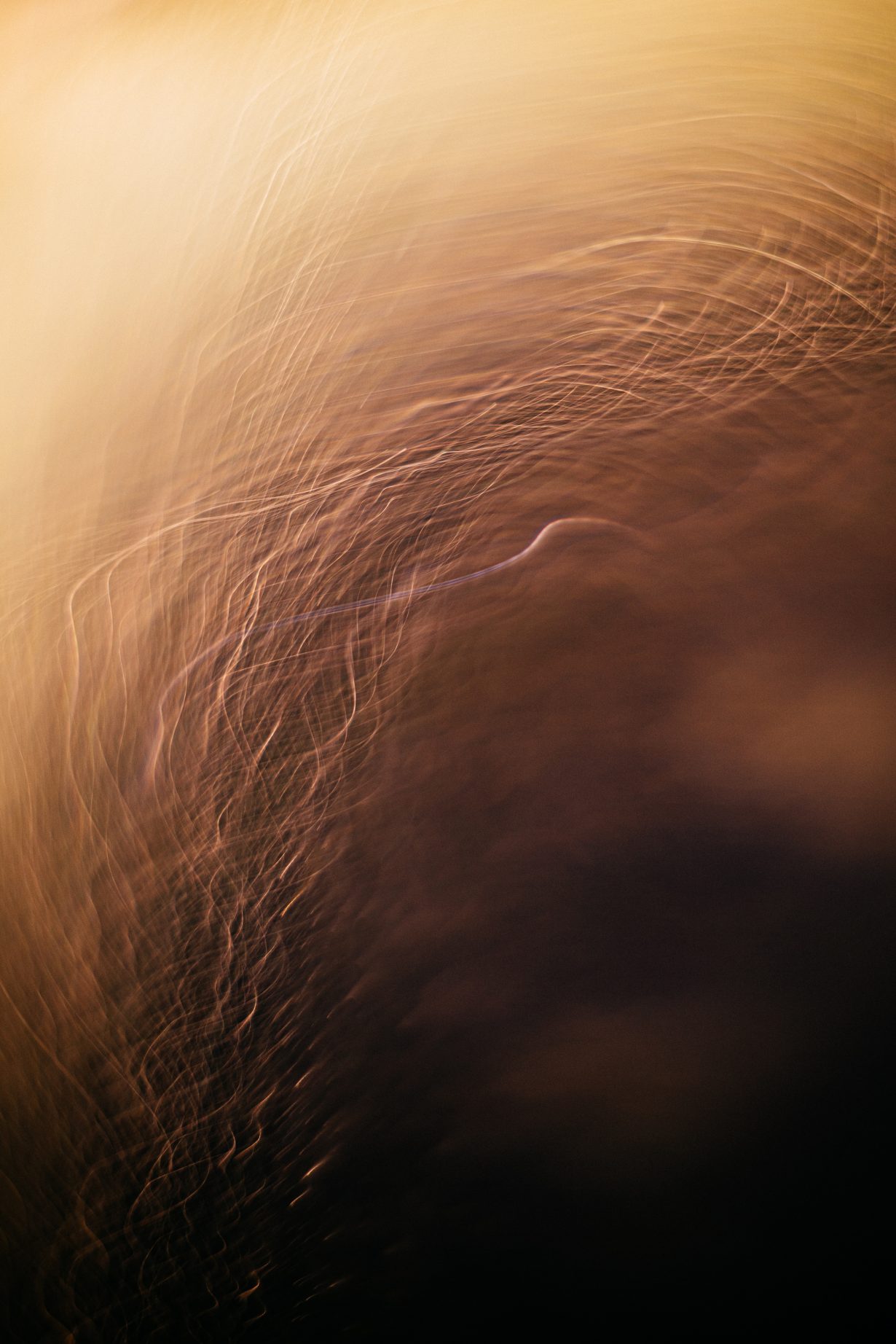
The artist interrogates the photographic medium as a tool for abstraction
Yosuke Takeda doesn’t exhibit his work that often: Singin’ in the Rain is his third solo show since 2014, when a series of exhibitions, all titled Stay Gold, also published as a book, were staged in galleries in Tokyo and Paris. In his previous work, the photographer has been inquisitive of light and its relationship to the photographic process, with front light and back light often interrogated to brilliant effect. A memorable pairing in Stay Gold compared the transit of Venus before the sun to an annular solar eclipse – these images startle our perceptions of space and time while also making sharp allusion to the photographic medium and machine in their resemblance to an aperture. Here, presenting a new collection of digital photographs (all dated 2022), Takeda seems more interested in light’s potential as a means of creation. The works appear as abstract, aesthetically beautiful experiments from his disciplined study.
The gallery is neatly partitioned, with a main exhibition space to the left and a smaller space shared with an office to the right. A narrow wall at the entrance straddling these spaces confronts the viewer with a picture titled 011801. A great number of water droplets scattered across a dark surface reflect a cool, ambient blue light. This presentation solidifies the motif of the exhibition, water, which may at first be indiscernible among the other pictures in the show.

With ten pictures in distinct, vivid colours and of mostly equal dimensions distributed evenly across the main space’s walls, entering it feels like stepping inside a prism. While most pictures in the exhibition (17 across the whole gallery) present a more abstract appearance of water than 011801, a few in particular, such as 004321, seem stretched almost beyond the medium, with dark blue streaks that flow across the print more closely resembling ink painting than photography. Other images cast illusions by capturing the movement of reflected light, which, in 005625, is almost sewing itself across the image. The aesthetic harmony of the images reflects certain parameters that must have been drawn by Takeda for the sake of this presentation. Although the exact processes behind these photos are not made explicit in any handouts from the gallery, it can be reasonably presumed – either by close observation or a familiarity with the photographer’s work – that the photos have not been significantly altered after their capture. This is to say that Takeda’s interests are distinct from those of Wolfgang Tillmans, for example, whose abstract pictures are often a result of intervention at various stages of their creation. Light, diffused here by water and transformed into a state sometimes resembling the artificial, is the key to these photographs and the cornerstone of Takeda’s work.
No explanation is given for why the titles are presented as numbers, but if one assumes that these photos were taken in sequence – which seems plausible considering the visual similarities of the brushlike 004034 and 004321, for example – a much larger body of work, perhaps as many as 230,000 pictures, casts a shadow over the 17 pictures on display. Images appear curated to reflect a range of colour and texture, repeating a visual effect only once or twice across the exhibition, perhaps to pre-empt the viewer’s exhaustion. It feels as though Takeda has made an optical shift, from camera obscura to dispersive prism, trading contradiction for something more pure. Perhaps the photographer has made one step closer to light itself.
Singin’ in the Rain at Kosaku Kanechika, Tokyo, 6 July – 10 August